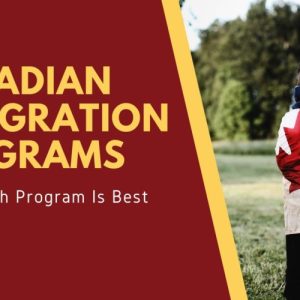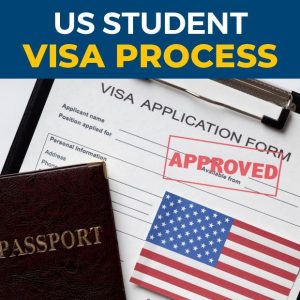Family-based green cards are a crucial avenue for individuals seeking permanent residency in the United States. These green cards enable U.S. citizens and permanent residents to sponsor their family members for immigration, thereby reuniting families and providing a pathway to the American Dream. This article explores the different kinds of family-based green cards, eligibility criteria, and the application process.

Understanding Family-Based Green Cards
Family-based green cards fall into two broad categories: Immediate Relative (IR) and Family Preference (F) categories. Each category has specific eligibility requirements and varying wait times based on visa availability.
Immediate Relative (IR) Categories
Immediate Relative green cards are available to close family members of U.S. citizens. There is no annual limit on the number of visas issued in these categories, which typically results in shorter processing times.
IR-1: Spouse of a U.S. Citizen
Eligibility: Spouses of U.S. citizens.
Benefits: No annual cap on visas; generally faster processing times.
Requirements: Proof of a bona fide marriage, valid marriage certificate, and evidence of the U.S. citizen’s status.
IR-2: Unmarried Children Under 21 of a U.S. Citizen
- Eligibility: Unmarried children under the age of 21 of U.S. citizens.
- Benefits: No annual cap on visas; priority processing.
- Requirements: Birth certificate, proof of the parent’s U.S. citizenship, and evidence of the parent-child relationship.
IR-3: Orphan Adopted Abroad by a U.S. Citizen
- Eligibility: Orphans adopted abroad by U.S. citizens.
- Benefits: No annual cap on visas.
- Requirements: Proof of adoption under U.S. and foreign laws, evidence of the adoptive parent’s U.S. citizenship, and compliance with immigration procedures.
IR-4: Orphan to Be Adopted in the U.S. by a U.S. Citizen
- Eligibility: Orphans to be adopted in the U.S. by U.S. citizens.
- Benefits: No annual cap on visas.
- Requirements: Evidence of intent to adopt, proof of suitability to adopt, and compliance with U.S. and foreign adoption laws.
IR-5: Parent of a U.S. Citizen
- Eligibility: Parents of U.S. citizens who are at least 21 years old.
- Benefits: No annual cap on visas.
- Requirements: Proof of the U.S. citizen’s status and birth certificate showing the parent-child relationship.
Family Preference (F) Categories
Family Preference green cards are available to more distant relatives of U.S. citizens and certain family members of lawful permanent residents. Unlike Immediate Relative categories, these visas are subject to annual caps, leading to longer waiting periods.
F-1: Unmarried Sons and Daughters of U.S. Citizens
- Eligibility: Unmarried sons and daughters (21 years and older) of U.S. citizens.
- Annual Cap: Limited number of visas; subject to longer wait times.
- Requirements: Proof of parent’s U.S. citizenship, birth certificate, and evidence of parent-child relationship.
F-2A: Spouses and Unmarried Children (Under 21) of Permanent Residents
- Eligibility: Spouses and unmarried children under 21 of lawful permanent residents (green card holders).
- Annual Cap: Limited number of visas; shorter wait times compared to other preference categories.
- Requirements: Proof of permanent resident status, marriage certificate or birth certificate, and evidence of relationship.
F-2B: Unmarried Sons and Daughters (21 and Older) of Permanent Residents
- Eligibility: Unmarried sons and daughters (21 years and older) of lawful permanent residents.
- Annual Cap: Limited number of visas; subject to longer wait times.
- Requirements: Proof of permanent resident status, birth certificate, and evidence of parent-child relationship.
F-3: Married Sons and Daughters of U.S. Citizens
- Eligibility: Married sons and daughters of U.S. citizens.
- Annual Cap: Limited number of visas; longer wait times due to high demand.
- Requirements: Proof of parent’s U.S. citizenship, birth certificate, marriage certificate, and evidence of parent-child relationship.
F-4: Brothers and Sisters of U.S. Citizens
- Eligibility: Brothers and sisters of U.S. citizens who are at least 21 years old.
- Annual Cap: Limited number of visas; subject to very long wait times.
- Requirements: Proof of U.S. citizenship, birth certificates of both siblings, and evidence of sibling relationship.
The Application Process
Applying for a family-based green card involves several steps. The process can be complex and time-consuming, but understanding each stage can help applicants prepare and navigate the system more effectively.
Step 1: Filing the Petition
Petition Form
The U.S. citizen or permanent resident sponsor must file Form I-130, Petition for Alien Relative, with U.S. Citizenship and Immigration Services (USCIS).
Supporting Documents
Include proof of the sponsor’s status (e.g., U.S. passport, green card), relationship to the beneficiary (e.g., birth certificates, marriage certificates), and other required documentation.
Step 2: USCIS Processing
Approval
Once USCIS approves the petition, it is forwarded to the National Visa Center (NVC) for further processing.
Notification
The beneficiary is notified when a visa number becomes available (for preference categories). The NVC will provide instructions for the next steps.
Step 3: Consular Processing or Adjustment of Status
Consular Processing
If the beneficiary is outside the U.S., they will undergo consular processing at a U.S. embassy or consulate in their home country. The NVC will send the approved petition to the appropriate embassy or consulate.
Adjustment of Status
If the beneficiary is already in the U.S., they can apply for adjustment of status to become a permanent resident using Form I-485. This process includes submitting the application, supporting documents, and undergoing a biometrics appointment.
Step 4: Medical Examination and Interview
Medical Examination
The beneficiary must undergo a medical examination by a designated physician to ensure they meet health requirements.
Interview
The beneficiary will attend an interview at the consulate or with USCIS (for adjustment of status). During the interview, they will be asked questions about their application and relationship with the sponsor.
Step 5: Receiving the Green Card
Approval
If the application is approved, the beneficiary will receive their green card, granting them lawful permanent resident status in the U.S. They can then live and work in the U.S. permanently.
Conclusion
Family-based green cards provide an essential pathway for reuniting families and allowing loved ones to live together in the United States. Whether you are a U.S. citizen or a permanent resident, understanding the different categories and processes involved can help you successfully navigate the immigration system and bring your family closer.
Frequently Asked Questions (FAQs)
How long does the family-based green card process take?
The processing time varies depending on the category. Immediate Relative categories typically have shorter wait times, while Family Preference categories can take several years due to annual caps.
Can a green card holder sponsor family members?
Yes, green card holders can sponsor their spouses and unmarried children under the Family Preference categories F-2A and F-2B.
What is the difference between an Immediate Relative and a Family Preference green card?
Immediate Relative green cards are for close family members of U.S. citizens and have no annual cap, resulting in faster processing. Family Preference green cards are for more distant relatives and are subject to annual limits, leading to longer wait times.
What documents are needed to file Form I-130?
Required documents include proof of the sponsor’s U.S. citizenship or permanent resident status, evidence of the relationship (e.g., birth or marriage certificates), and supporting documentation like photos and correspondence.
Can siblings of U.S. citizens apply for a green card?
Yes, siblings of U.S. citizens can apply under the F-4 category, but this category often has very long wait times due to high demand and annual limits.
Is there an age requirement for sponsoring a parent?
Yes, U.S. citizens must be at least 21 years old to sponsor their parents under the IR-5 category.
Can I work while waiting for my family-based green card?
If you are in the U.S. and have applied for adjustment of status, you can apply for a work permit (EAD) while your green card application is pending.





